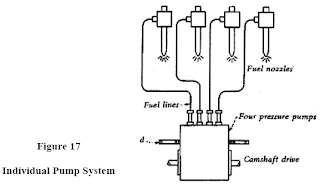Six Types of Renewable Energy Sources - What Are They?
The global battle against climate change has encouraged developed countries and developing nations to reduce carbon dioxide emissions. The signatories to the Kyoto Protocol to take the world emission reduction activities, one of which is carrying out research and development in renewable energy. Here are six types of renewable energy sources being considered to feed the world in the near future.
Hydropower is the largest source of renewable energy. Generating capacity amounts to 77,000 megawatts. Water from rivers and waterfalls are released through turbines to produce energy. Although non-polluting technology, which may possibly damage the marine fauna, as it can alter water quality. Apart from that, hydropower is also very expensive and is likely to take much time to install.
The International Energy Agency reported that 11% of world's renewable energy derived from biomass. The technology produces 7,000 megawatts of renewable electricity. Biomass is taken from the industrial processing of forestry and wood products, agriculture, construction and solid waste. These biodegradable materials are converted into gas by burning in a gas turbine. In the United States, operations of the plants are the main source of biomass energy. It is the best alternative to coal and it produces less sulfur dioxide.
Among the six types of sources of renewable energy, geothermal energy is one of the most profitable and reliable. In the United States, which generates up to 2,800 megawatts of energy each year, which is about 2% of total energy consumption in the country. Geothermal energy is produced from natural steam beneath the surface of the Earth. The steam is extracted to drive a turbine which in turn, powers an electric generator. The problem of geothermal energy is the difficulty of finding viable sites land. However, the same technology is used on a small scale for the construction of power boilers.
Wind power produces 2,500 megawatts of power which comprises 1% of total electricity consumption in the United States. The wind turns the blade attached to a main axis, where it has installed a generator. Energy capacity is determined by the size of the turbine. Small wind turbines are generally used to power homes, farms and ranches in the country. The drawback of this technology is the noise produced and relatively expensive installation cost.
photovoltaic cell is one among the six types of renewable energy sources that do not require maintenance. Basically, energy is produced using materials such as microchip-absorbing sunlight. This frees the electrons from their atoms allowing them to generate electricity. Photovoltaic cells are generally reliable and produce less pollution to none.
Solar thermal systems, as its name indicates, it also obtain energy from sunlight. The system uses solar collectors to absorb solar radiation that will be used to heat water or air to generate steam used to operate a turbine. The turbine then turns on a generator.
federal and state government encourages citizens to install solar power at home or in the workplace by granting tax credits on income. The same is being done for the other six types of renewable energy sources.
1. Hydroelectric
Hydropower is the largest source of renewable energy. Generating capacity amounts to 77,000 megawatts. Water from rivers and waterfalls are released through turbines to produce energy. Although non-polluting technology, which may possibly damage the marine fauna, as it can alter water quality. Apart from that, hydropower is also very expensive and is likely to take much time to install.
2. Biomass
The International Energy Agency reported that 11% of world's renewable energy derived from biomass. The technology produces 7,000 megawatts of renewable electricity. Biomass is taken from the industrial processing of forestry and wood products, agriculture, construction and solid waste. These biodegradable materials are converted into gas by burning in a gas turbine. In the United States, operations of the plants are the main source of biomass energy. It is the best alternative to coal and it produces less sulfur dioxide.
3. Geothermal Energy
Among the six types of sources of renewable energy, geothermal energy is one of the most profitable and reliable. In the United States, which generates up to 2,800 megawatts of energy each year, which is about 2% of total energy consumption in the country. Geothermal energy is produced from natural steam beneath the surface of the Earth. The steam is extracted to drive a turbine which in turn, powers an electric generator. The problem of geothermal energy is the difficulty of finding viable sites land. However, the same technology is used on a small scale for the construction of power boilers.
4. Wind Energy
Wind power produces 2,500 megawatts of power which comprises 1% of total electricity consumption in the United States. The wind turns the blade attached to a main axis, where it has installed a generator. Energy capacity is determined by the size of the turbine. Small wind turbines are generally used to power homes, farms and ranches in the country. The drawback of this technology is the noise produced and relatively expensive installation cost.
5. Photovoltaic cells
photovoltaic cell is one among the six types of renewable energy sources that do not require maintenance. Basically, energy is produced using materials such as microchip-absorbing sunlight. This frees the electrons from their atoms allowing them to generate electricity. Photovoltaic cells are generally reliable and produce less pollution to none.
6. Solar Thermal Systems
Solar thermal systems, as its name indicates, it also obtain energy from sunlight. The system uses solar collectors to absorb solar radiation that will be used to heat water or air to generate steam used to operate a turbine. The turbine then turns on a generator.
federal and state government encourages citizens to install solar power at home or in the workplace by granting tax credits on income. The same is being done for the other six types of renewable energy sources.
i hope that you got a good idea about it
thank you













Comments